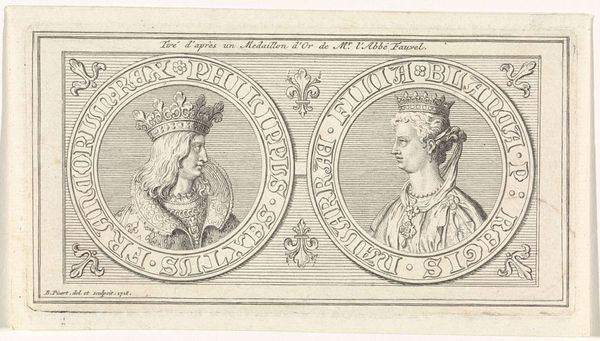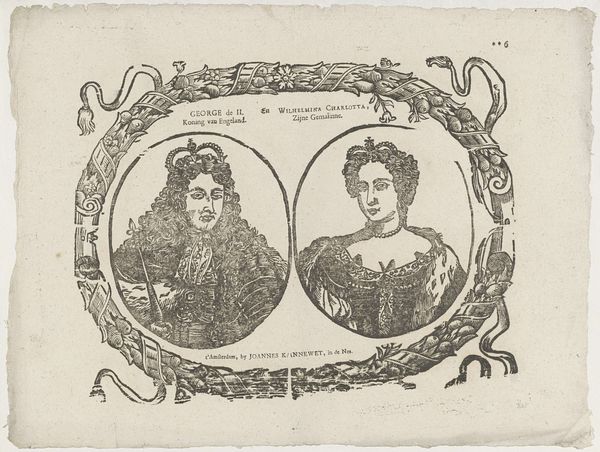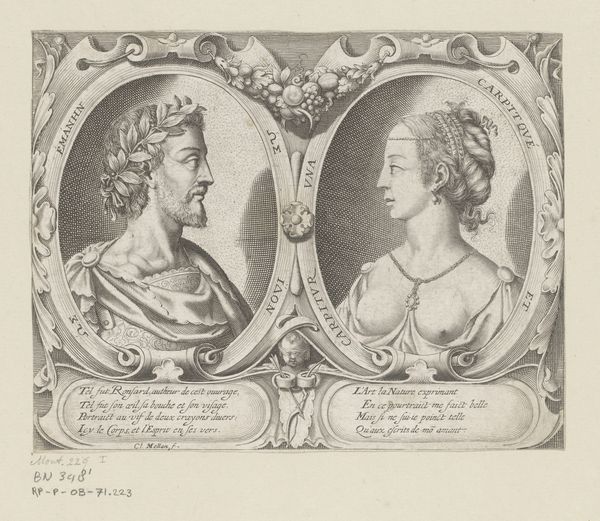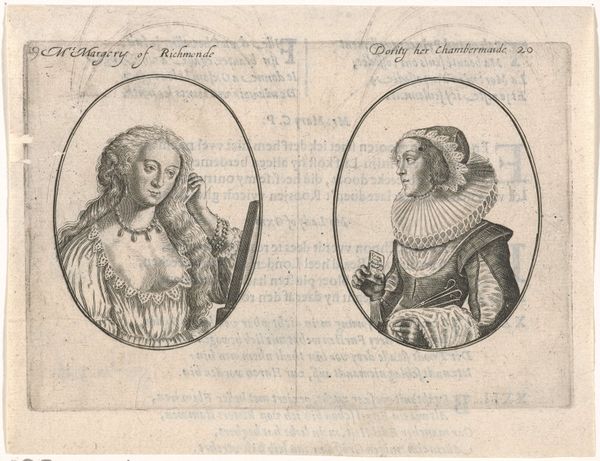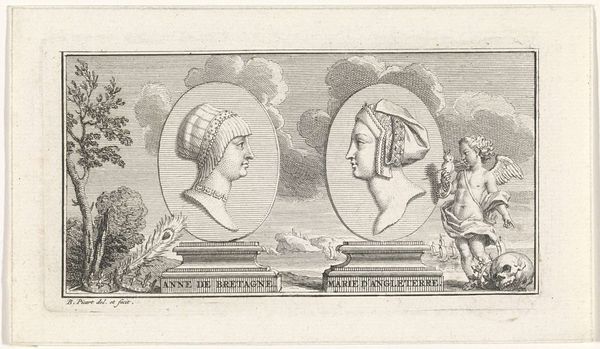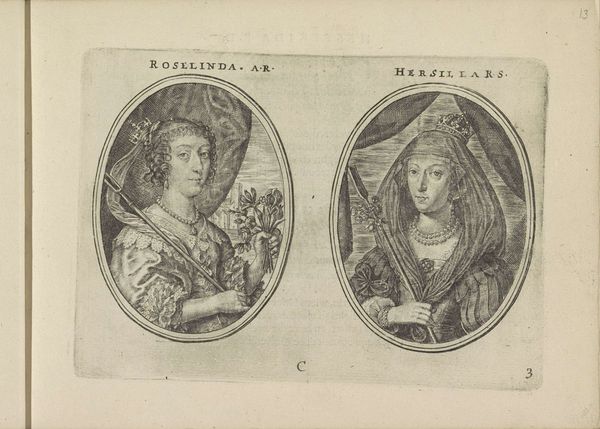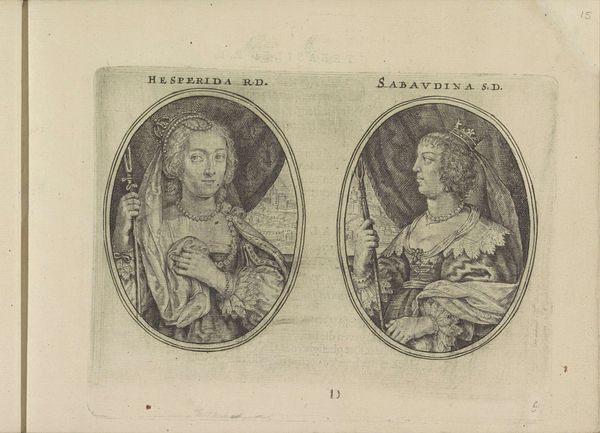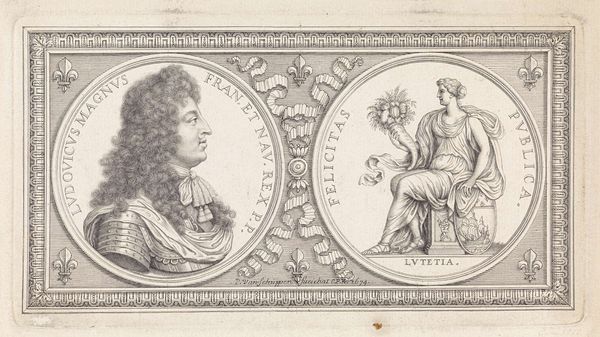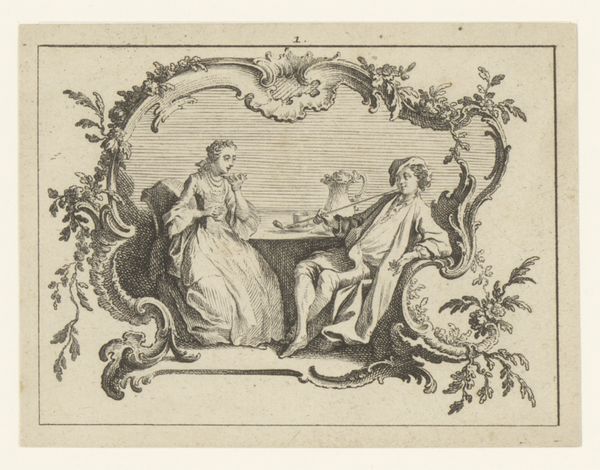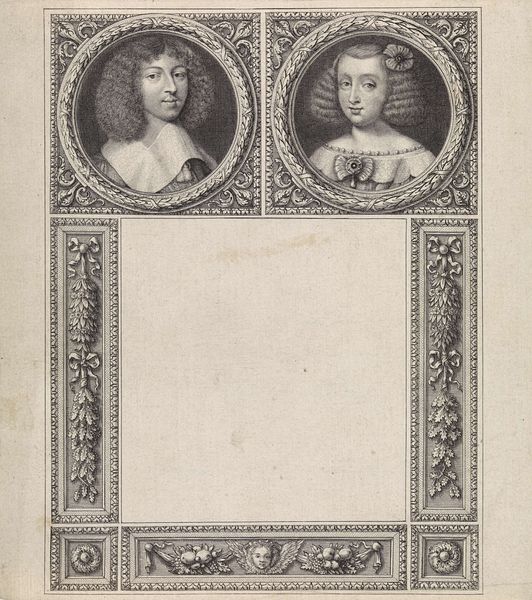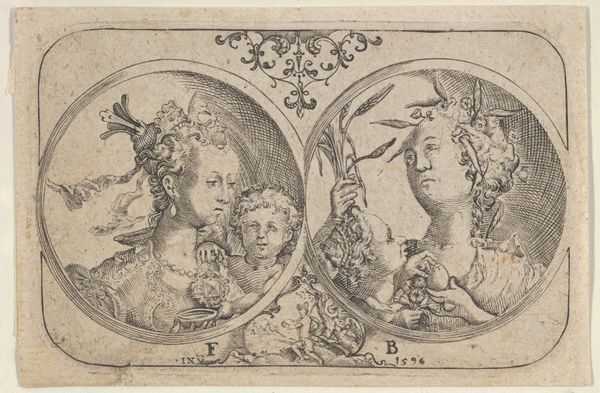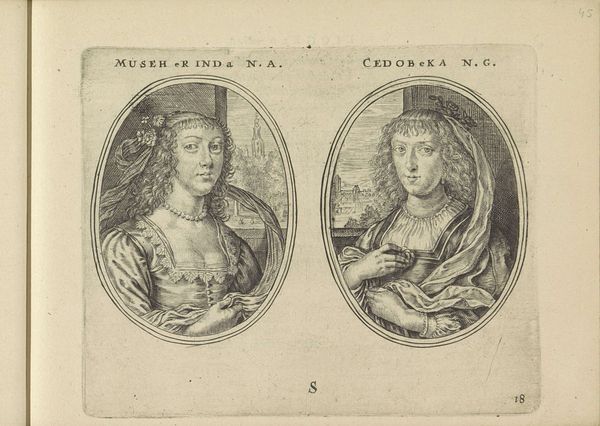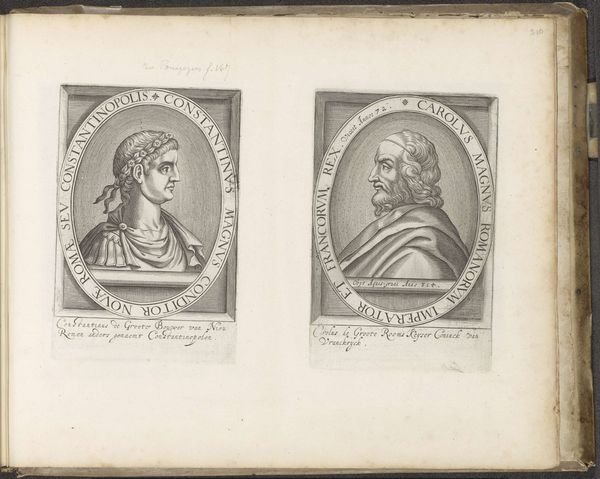
Medaillons met de portretten van keizer Augustus en Pietro Aretino 1683 - 1733
0:00
0:00
bernardpicart
Rijksmuseum
print, engraving
#
portrait
#
baroque
# print
#
figuration
#
line
#
history-painting
#
engraving
Dimensions: height 73 mm, width 137 mm
Copyright: Rijks Museum: Open Domain
Curator: Here we have a rather intriguing print from the Rijksmuseum's collection. It's entitled "Medaillons met de portretten van keizer Augustus en Pietro Aretino," created sometime between 1683 and 1733 by Bernard Picart. It’s an engraving that pairs these two figures in a fascinating way. Editor: Oh, it does have a peculiar charm! The sharp contrast between the stoic Roman emperor and the more… lively looking Aretino really pops. And is that a pan flute down there? The whole piece feels very stagey, theatrical somehow. Curator: Precisely. Picart was deeply interested in the public role of figures like these, and how their images circulated. Augustus, of course, was the master of image control, carefully crafting his public persona, while Aretino, the Renaissance writer, was famous for his sharp wit and political commentary. It’s a baroque interpretation of portraits. Editor: He looks so…fluffy haired for someone immortalized in stone. I bet there is even a satire beneath. The symbols—the book, the musical instruments, the ribbons tying it all together—it reads like a rather dry commentary. It makes me chuckle to consider the contrast between Aretino, the flamboyant critic, and Augustus, who basically invented propaganda as we know it. It makes you think about what lasts—gossip or marble? Curator: A compelling reading! What interests me further is how Picart is deliberately placing them within a visual dialogue. Consider the period this piece was created—Europe was grappling with new forms of celebrity and political discourse. So placing Augustus, a symbol of imperial power, alongside Aretino suggests a meditation on enduring influence and the power of the media to mold it. The role of images to shape the public is at stake. Editor: True. Maybe it's not so dry after all! Thanks to that careful choice of details, they almost get to trade roles, now. This isn’t a picture, but rather a stage for ideas about fame and what’s ephemeral and not in art. Very clever, if you think of the politics behind these things. Curator: Indeed. Picart seems to ask: what kind of imagery we inherit and celebrate. He invites a debate across time. Editor: Well, I know which one I’d want to share a drink with, and it probably wouldn't be Augustus! A very neat piece. Thanks for opening my eyes to the social contexts of this funny coupling!
Comments
No comments
Be the first to comment and join the conversation on the ultimate creative platform.
